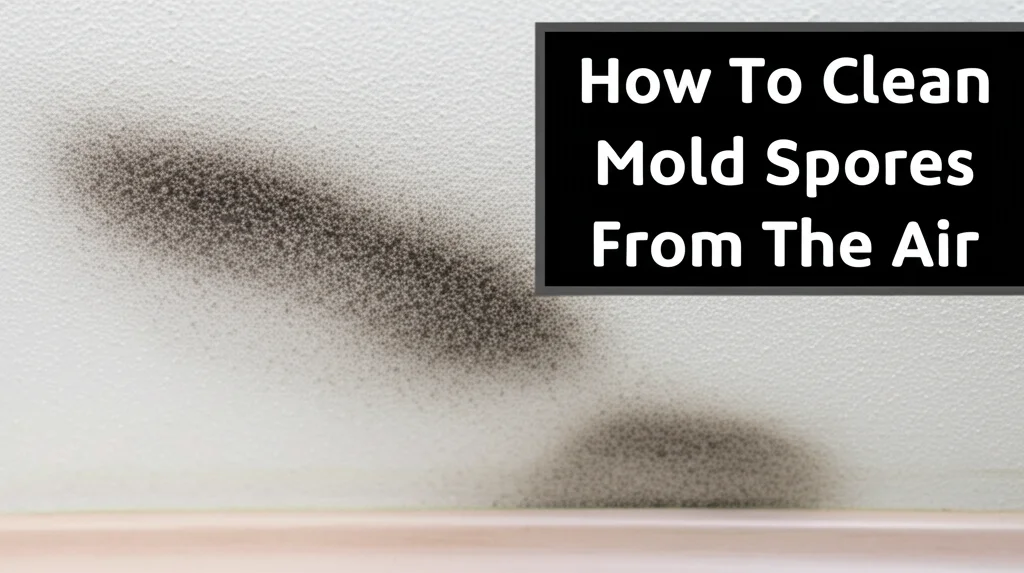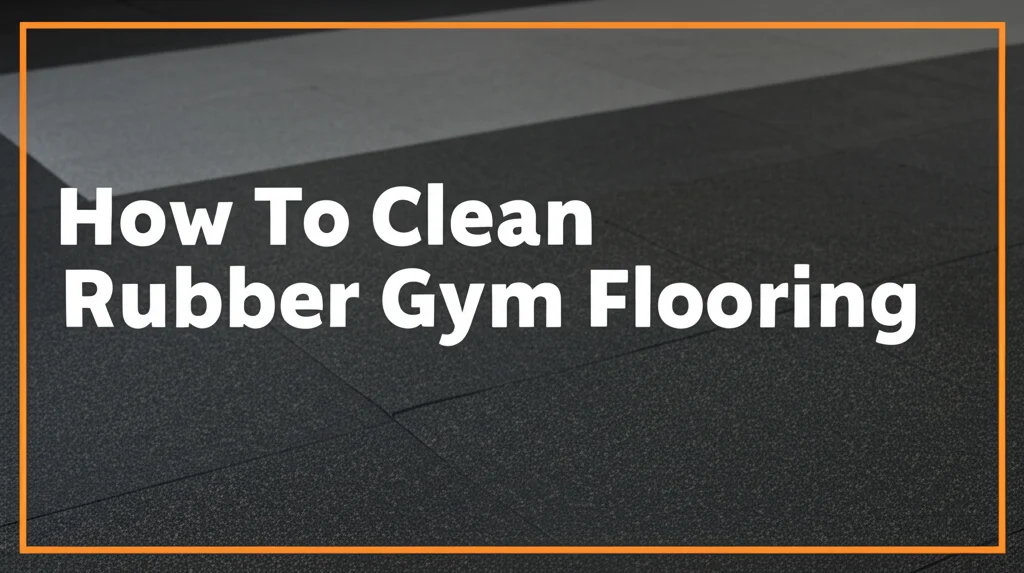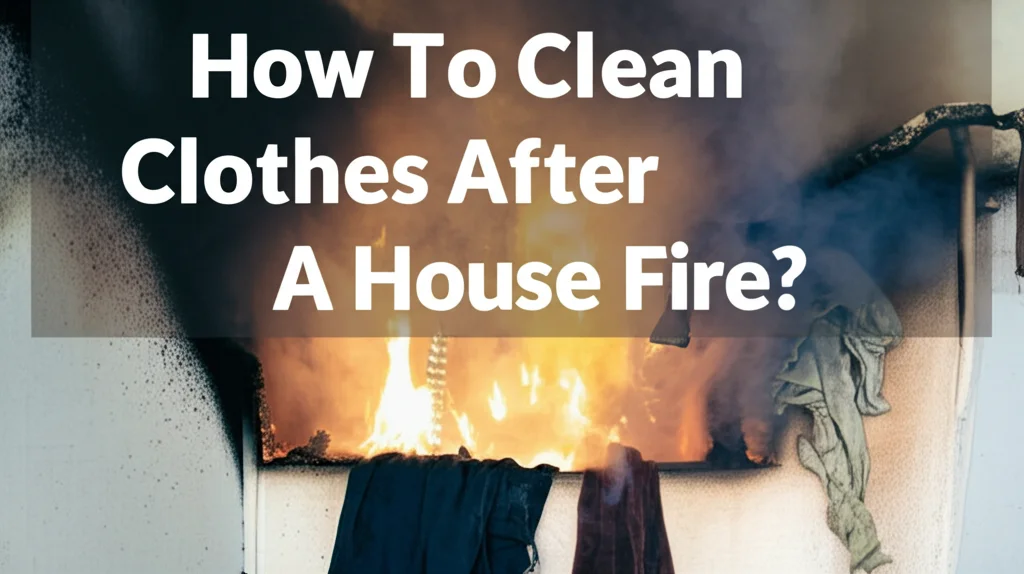· Home & Cleaning · 7 min read
How To Clean Mold Spores From The Air

Breathe Easy: How To Clean Mold Spores From The Air
Have you noticed a musty smell in your home, or are you concerned about potential mold growth? You’re not alone. Many homeowners worry about mold spores circulating in the air, impacting their health and home environment. Cleaning mold spores from the air is crucial for maintaining good indoor air quality and preventing health issues. This article will guide you through effective strategies to eliminate airborne mold, from simple DIY solutions to professional-grade air purifiers. We’ll cover identifying the source, cleaning the air, and preventing future growth, ensuring a healthier home for you and your family.
Takeaway:
- Identify and address the source of mold growth.
- Utilize air purifiers with HEPA filters to capture airborne spores.
- Improve ventilation to reduce humidity and discourage mold.
- Regularly clean surfaces to remove settled spores.
What’s the quickest way to get rid of mold spores in the air?
Using an air purifier with a HEPA filter is the fastest way to remove mold spores from the air. Combine this with addressing the source of the mold and improving ventilation for a comprehensive solution.
1. Understanding Mold Spores and Their Impact
Mold spores are microscopic particles that float through the air, constantly seeking damp environments to colonize. They’re a natural part of the environment, but an overabundance indoors can lead to health problems and property damage. Exposure to mold spores can trigger allergic reactions, asthma attacks, and other respiratory issues, especially in sensitive individuals. Understanding how mold spreads and the potential health risks is the first step toward effective removal. It’s important to remember that simply seeing visible mold means spores are already circulating.
The Mold Life Cycle
Mold begins as spores, then germinates and grows when it finds moisture and a food source. This growth releases more spores, continuing the cycle. Controlling moisture is key to breaking this cycle. Different types of mold require different levels of moisture, but all need some water to thrive. Addressing leaks and humidity is therefore paramount.
2. Identifying the Source of Mold Growth
Before you start cleaning the air, you need to find and address the source of the mold. Cleaning the air is only a temporary solution if the source remains. Common sources include leaky roofs, plumbing issues, condensation, and flooding. Look for visible mold growth on walls, ceilings, floors, and around windows. Pay attention to areas with high humidity, like bathrooms and basements.
Where to Look for Hidden Mold
Mold can hide in unexpected places. Check behind wallpaper, under carpets, inside walls, and in air conditioning ducts. A moisture meter can help detect hidden moisture, indicating potential mold growth. If you suspect mold behind walls, professional mold inspection might be necessary. Don’t hesitate to call a professional if you’re unsure about the extent of the problem.
3. Air Purifiers: Your First Line of Defense
Air purifiers with HEPA (High-Efficiency Particulate Air) filters are incredibly effective at capturing mold spores from the air. HEPA filters are designed to trap 99.97% of particles 0.3 microns in size, which includes most mold spores. When choosing an air purifier, consider the size of the room and the CADR (Clean Air Delivery Rate) rating. A higher CADR means the purifier can clean the air in a larger space more quickly.
Choosing the Right Air Purifier
- HEPA Filter: Ensure the purifier has a true HEPA filter.
- CADR Rating: Select a CADR appropriate for your room size.
- Activated Carbon Filter: Look for a purifier with an activated carbon filter to remove odors.
- Filter Replacement: Consider the cost and frequency of filter replacements.
- You can find more information on maintaining a clean home at https://www.beacleaner.com/how-to-clean-luxury-vinyl-plank-flooring/.
4. Improving Ventilation to Reduce Mold Spores
Good ventilation helps reduce humidity and discourages mold growth. Open windows and doors whenever possible to allow fresh air to circulate. Use exhaust fans in bathrooms and kitchens to remove moisture-laden air. Consider using a dehumidifier in damp areas like basements to maintain a humidity level below 60%. Proper ventilation is a simple yet effective way to prevent mold from taking hold.
Whole-House Ventilation Systems
For more comprehensive ventilation, consider a whole-house ventilation system. These systems bring fresh air into your home while exhausting stale, humid air. Heat recovery ventilators (HRVs) and energy recovery ventilators (ERVs) can also improve energy efficiency. These systems can be a significant investment but offer long-term benefits for air quality and energy savings.
5. Cleaning Surfaces to Remove Settled Spores
While air purifiers capture airborne spores, settled spores on surfaces can still contribute to the problem. Regularly clean surfaces with a damp cloth and a mild detergent. For moldy surfaces, use a mold-killing cleaner, following the manufacturer’s instructions carefully. Always wear gloves and a mask when cleaning mold. Proper cleaning removes settled spores and prevents them from becoming airborne again.
DIY Mold Cleaning Solutions
- Vinegar: White vinegar is a natural mold killer. Spray undiluted vinegar onto the moldy surface and let it sit for an hour before wiping clean.
- Baking Soda: Mix baking soda with water to create a paste. Apply the paste to the moldy surface, let it sit, and then scrub clean.
- Hydrogen Peroxide: Spray 3% hydrogen peroxide onto the moldy surface and let it sit for 10-15 minutes before wiping clean.
- If you’re dealing with mold on painted walls, you might find this article helpful: https://www.beacleaner.com/how-to-remove-mold-from-painted-walls/.
6. Addressing Humidity and Water Leaks
Controlling humidity and fixing water leaks are essential for preventing mold growth. Repair leaky roofs, plumbing, and windows promptly. Use a dehumidifier in damp areas to maintain a humidity level below 60%. Ensure proper drainage around your foundation to prevent water from seeping into your basement. Preventing water damage is the most effective way to prevent mold.
Monitoring Humidity Levels
A hygrometer is a simple device that measures humidity levels. Keep a hygrometer in areas prone to moisture, like basements and bathrooms. Aim for a humidity level between 30% and 60%. If the humidity level is consistently above 60%, take steps to reduce it, such as using a dehumidifier or improving ventilation.
7. Professional Mold Remediation
If you have a large mold problem or are unsure about how to proceed, it’s best to call a professional mold remediation company. Professionals have the expertise and equipment to safely and effectively remove mold. They can also identify the source of the mold and recommend solutions to prevent future growth. Don’t risk your health or property by attempting to tackle a large mold problem on your own.
When to Call a Professional
- Mold covers a large area (more than 10 square feet).
- You suspect hidden mold growth.
- You have health concerns related to mold exposure.
- You’ve tried DIY methods without success.
- You can learn more about cleaning your floors at https://www.beacleaner.com/how-to-clean-hardwood-floors-with-vinegar/.
Frequently Asked Questions (FAQ)
Q: Can bleach kill mold spores in the air? A: While bleach can kill mold on surfaces, it’s not effective at removing spores from the air and can even create harmful fumes. Air purifiers with HEPA filters are a much safer and more effective option for cleaning mold spores from the air.
Q: How often should I change the HEPA filter in my air purifier? A: The frequency of filter replacement depends on usage and air quality. Generally, HEPA filters should be replaced every 6-12 months. Check the manufacturer’s instructions for specific recommendations.
Q: What are the symptoms of mold exposure? A: Common symptoms of mold exposure include allergic reactions (sneezing, runny nose, itchy eyes), asthma attacks, coughing, and respiratory problems.
Q: Is it possible to completely eliminate mold spores from a home? A: It’s nearly impossible to eliminate all mold spores, as they are naturally present in the environment. However, you can significantly reduce their levels and prevent growth by controlling moisture and using air purification methods.
Q: Can I use a regular vacuum cleaner to clean up mold? A: No, using a regular vacuum cleaner can actually spread mold spores into the air. Use a vacuum cleaner with a HEPA filter specifically designed for mold remediation.
Conclusion
Cleaning mold spores from the air is a vital step in maintaining a healthy home environment. By understanding the sources of mold, utilizing air purifiers, improving ventilation, and addressing moisture issues, you can effectively reduce airborne mold and protect your family’s health. Remember, proactive prevention is key. Regularly inspect your home for leaks and humidity, and take action promptly to address any issues. Don’t hesitate to seek professional help if you’re dealing with a large or complex mold problem. Breathe easier knowing you’re taking steps to create a cleaner, healthier living space.




